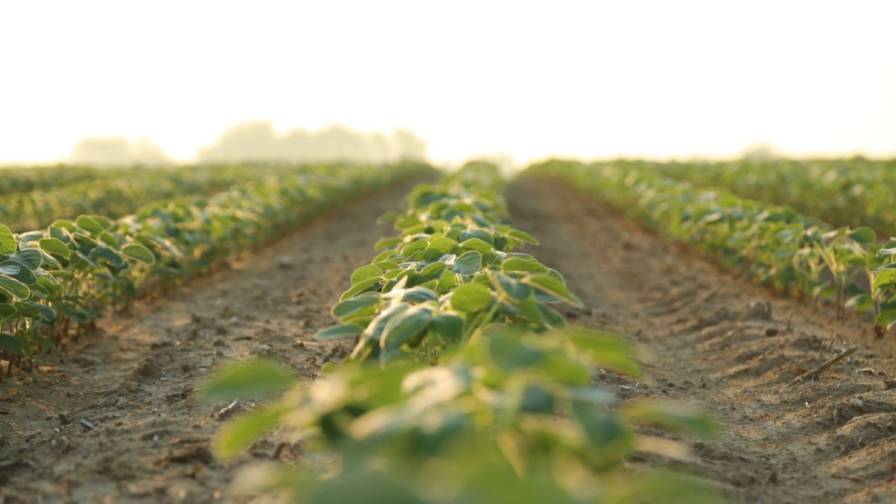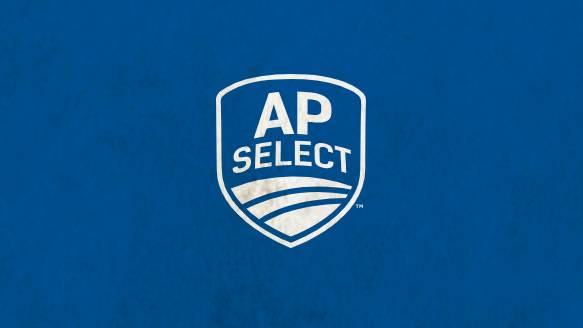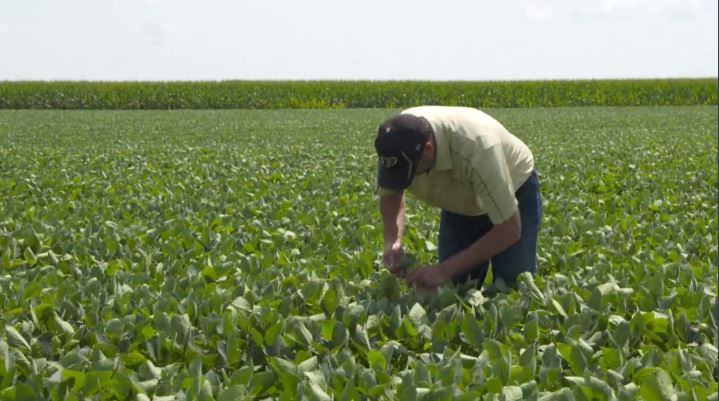Visual Guidance Remains Important
Although we may be living in what many observers are calling “The Machine Age,” there are still a healthy number of people who like to be in control of the vehicles they are operating. And according to Mike Olson, North American sales manager for Ag Leader Technology, this is especially true in agriculture.
“Visual guidance is still fairly popular with many ag operators,” says Olson. “Even with automated systems out there, there are still a large number of ag people who like to be in charge, so to speak, the whole time they are working in the field.”
Harlan Little, business manager for Leica Geosystems, agrees with Olson, adding that visual guidance systems can serve as a bridge for agricultural users. “For many ag operators, visual guidance systems continue to be stepping stones to more advanced systems such as automatic steering,” says Little. “And they are popular. Based upon the data I’ve seen, some form of visual guidance system relying on GPS is used by 60% to 70% of the people who make their living in agriculture.”
Looking For Simplicity
To explain this level of market penetration for visual guidance systems, Little cites two main reasons: Simplicity and accuracy. “Luckily, the inaccuracies that used to be present in these kinds of systems 20 years ago don’t exist anymore,” he says. “Many of today’s best visual guidance systems are just plug and drive units — they don’t require the operator to be a rocket scientist to be figured out.”
As an example of this kind of system, Little points to Leica’s mojo3D, which has recently been upgraded with an option called Ultimate Curve guidance. “Using Ultimate Curve guidance, a mojo3D unit follows the coverage of where the vehicle has been in that particular field,” he says. “Then when the operator engages the replay mode, Ultimate Curve will follow that exact same path in the field.”
Trimble Navigation Limited is another company that has catered to its users’ “quest for simplicity and accuracy,” says Brad Rouse, Southern regional distribution manager, Trimble Agricultural Division. Last spring, the company introduced its RTX technology to the marketplace. Operated by GNSS correction technology, RTX can refine unit repeatable accuracy from 6 to 8 inches down to 2 inches without the use of a traditional RTK infrastructure.
Ag Leader’s Olson says his company’s customers also are increasingly looking for visual guidance systems with an ease-of-use factor. “That’s the No. 1 request we get from our customers for these kinds of systems — ease of use,” he says. “Many users still want to just set the A Point, set the B Point and just go without anything else required on their part.”
For these users, Ag Leader offers both the Integra and Versa units. According to Olson, applicators can monitor, map, record and control field activities using the Integra display, which features a 12.1-inch touchscreen. Meanwhile, for smaller operations, the Versa display provides the same basic level of visual guidance, but with an 8.4-inch touchscreen.
More Input
In an apparent contradiction to the move to simplicity, some visual guidance makers say their users are looking for more information/abilities from their systems. “We’ve definitely seen a move towards systems that can do more for their operators,” says Tim Stuenkel, global marketing communications manager for TeeJet Technologies.
For this crowd, TeeJet offers its Matrix Pro GS Guidance System, equipped with the company’s RealView guidance over video. Up to eight RealView cameras can be used to monitor multiple machine operations while at the same time viewing guidance information. Matrix Pro GS also supports droplet size monitoring capability. According to Stuenkel, this feature provides real-time display of the droplet size being produced at the sprayer boom, allowing the operator to optimize spraying application.
Even with all these added features, many products in the high-tech world have crammed this type of functionality into smaller units. For example, consider how large a laptop computer or mobile telephone used to be 20 years ago vs. today. In the agricultural machine cab, the move towards smaller, more powerful units has also taken hold.
But there are times, says Paul Welbig, director of marketing, business development and Slingshot operations for Raven Industries, when smaller isn’t necessarily wanted. “We’ve had many customers looking for something a bit larger for inside their machine cabs as, shall we say, their eyes have aged over the years,” says Welbig.
For this user, Raven introduced its Envizio Pro XL during the fall. Designed for operators looking for a more viewable screen, the Envizio Pro XL features an extra-large 10.4-inch color touchscreen display while operating with the same features that have made the Envizio Pro and Envizio Pro II popular with visual guidance system users. “We’ve even made the buttons bigger on the Envizio Pro XL to appeal to these customers,” adds Welbig.
Finally, there is a trend towards more connectivity among all agricultural systems, says Darren Pritchard, director of sales, North America & Australia for AgJunction. It’s for this customer that the company has recently launched its Outback MAX system. Capable of working with the company’s xDrive with eTurns, Outback MAX features full section and variable-rate control. The unit can also offer visual guidance with video support through up to four monitoring cameras and an optional switch box and lightbar that attach to the console.
Outback MAX also features wireless communication. “Users can surf the Internet as an added perk of using the system,” says Pritchard. “Better still, Outback MAX allows for remote diagnostics to be conducted on the unit when it’s in the field. This way, our technicians can repair or fix any problem as it comes up without the operator experiencing any downtime whatsoever.”






